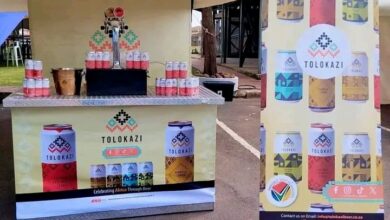Mastercard Spearheads South Africa’s Digital Payments Evolution With New Local Investments

Mastercard Spearheads South Africa’s Digital Payments Evolution With New Local Investments. Mastercard announced the completion of significant new technological infrastructure that will enable the tech company to process transactions locally and drive the modernization of South Africa’s payments industry. The project is the latest major investment that Mastercard has made in technology and partnerships in South Africa that are set to further improve the country’s payment ecosystem, ensuring a seamless experience for both Mastercard partners and consumers.
The new technologies include the launch of new data centers, which will enable the processing of local transactions even more efficiently and securely. Mastercard’s priorities and investments are closely aligned with South African Reserve Bank (SARB) national digital transformation agenda, Vision 2025, focusing on enhancing the digital ecosystem and supporting the African continent through locally relevant technology.
“This is a significant milestone for Mastercard in South Africa, and the continent’s wider modernization journey, ” said Gabriel Swanepoel, Southern Africa Country Manager, Mastercard. “A strong digital ecosystem is a top priority for our partners, policymakers and customers. That’s why we’ve been committed to ensuring a resilient and world-class payments infrastructure for decades. And that’s why we’ll continue our work to make SARB’s Vision 2025 digital transformation agenda a reality.”
Mastercard’s long-term commitment to South Africa has seen it grow its acceptance footprint nationwide by approximately 200% since 2021 and bring various forms of digital payments options including QR codes, ATMs and point-of-sale terminals. This has provided secure payment choices for consumers and promoted business efficiency. Furthermore, Mastercard is on a mission to include 1 billion individuals in the digital economy globally by 2025.
Mastercard is diversifying its approach to payments in South Africa, going beyond traditional card payments to offer a diverse range of tailored products and services. The initiative is vital and timely, because, according to McKinsey, Africa still operates primarily as a cash-based economy, with cash accounting for 90% of all transactions. As a result, consumers can be locked out of many economic activities, have extremely limited retail choices, and cannot access credit, thereby restricting overall economic growth. The digital evolution in payments helps bridge divides within the financial ecosystem and provide solutions that cater to various market segments, including fintech, cybersecurity, retail, and e-commerce.
Through local partnerships, Mastercard develops, incubates, and scales locally relevant solutions including simplifying mobile payments with partner solutions such as VodaPay Masterpass and Nedbank’s Money Message; collaboration with payment facilitators like iKhokha to enable card acceptance by rolling out low-cost card machines; and its work with Standard Bank and Simplify Commerce to launch SimplyBlu to help small businesses enter the world of electronic trading.
Commerce is evolving, from the way people pay to the currency they choose to use. With investments in resilient financial systems infrastructure, diverse fintech solutions, local and regional partnerships, and dedication to building financial inclusion, Mastercard is shaping the future of digital payments in South Africa and the broader African continent.




